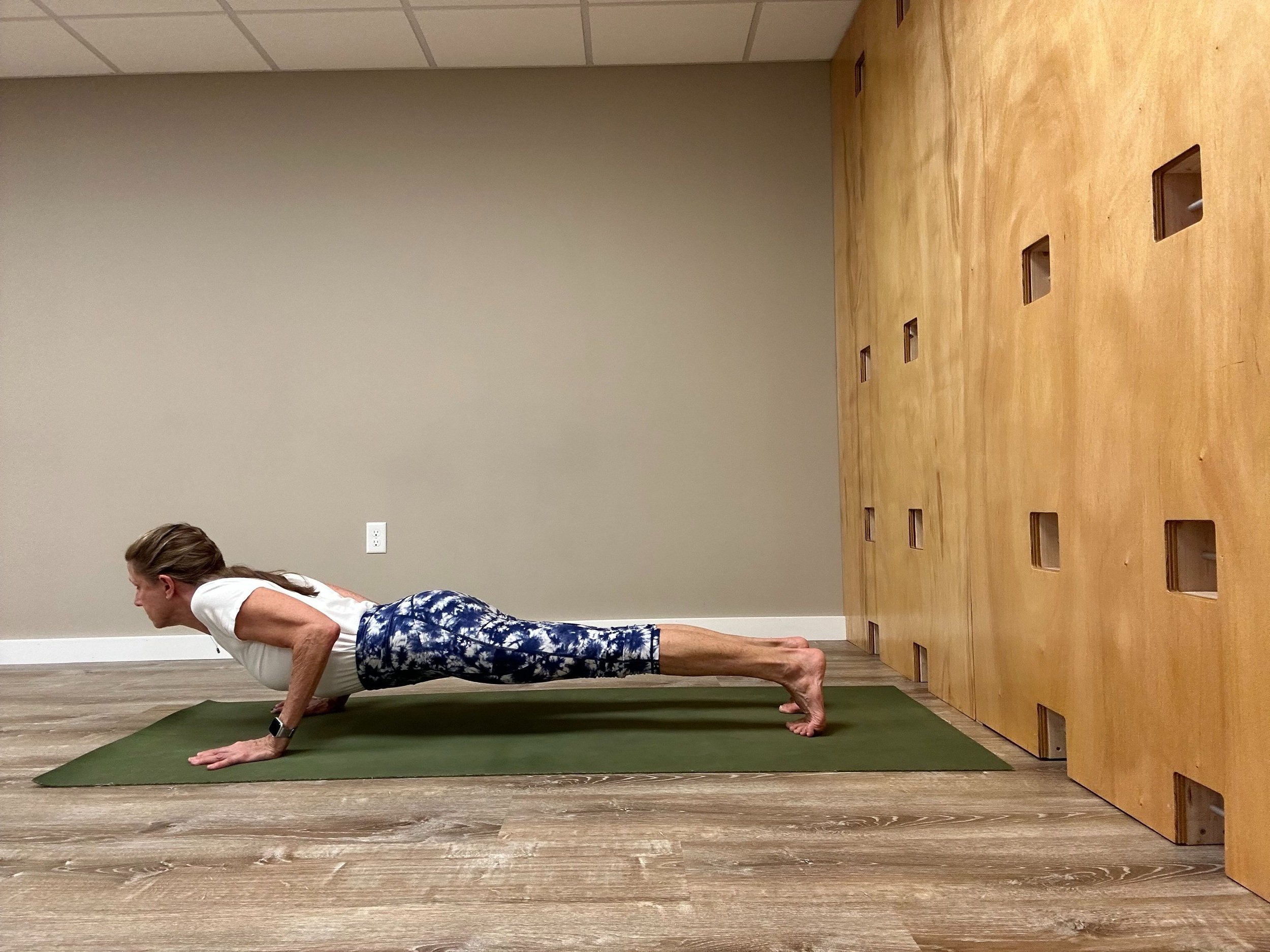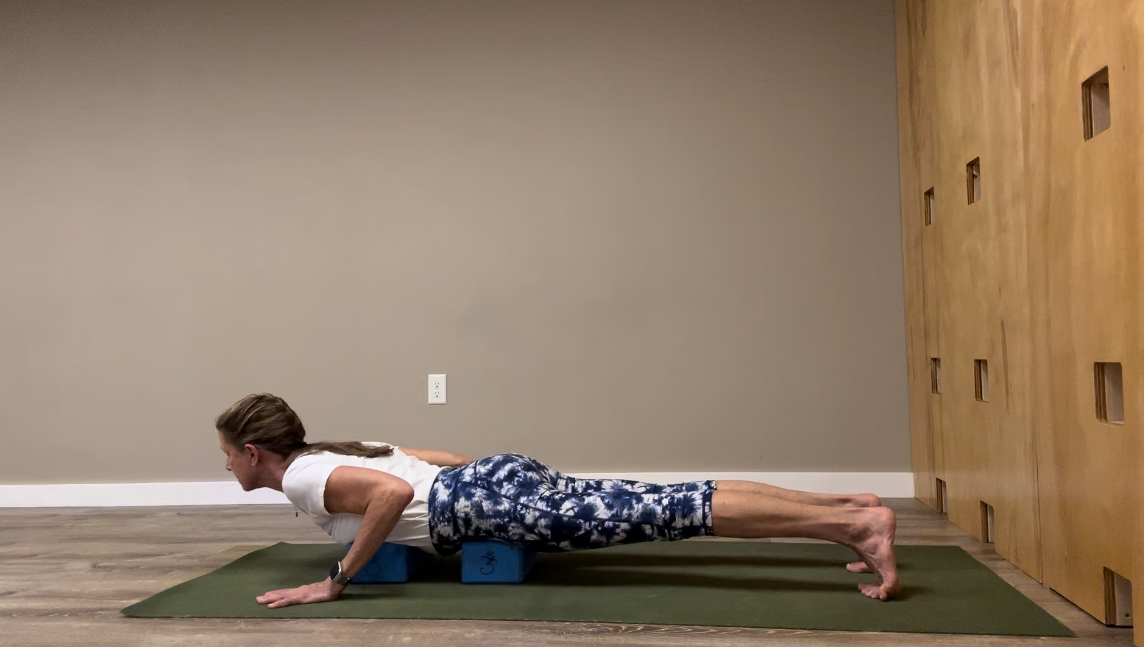Caturanga Dandasana Four Limbed Staff Pose
Everybody knows the Sanskrit word: caturanga. It’s a low push up.
It’s a pretty important pose, too. You can’t do a Surya Namaskar (Sun Salute) without it. It is also considered a precursor to back bending and arm balancing.
But, do you have problems with Caturanga Dandasana? It can be a real pain (literally) for a lot of people.
If you are strong and do a lot of push-ups, or burpees, then Caturanga is not a big deal. But, if you are weaker and/or have a shoulder issue, then you probably avoid this pose.
But you don’t have to have really buff arms to do this pose. Your core and legs should be contributing equally to the success of this pose.
Let’s look at the form of Caturanga. Think of it as Tadasana with your arms bent.
Caturanga in Tadasana
I always like to ask students to stand in Tadasana and bend their arms into Caturanga position. This usually shows if they understand the arm placement.
The upper arms are alongside of and slightly behind the body as they are in Tadasana. The forearms are bent at a 90-degree angle and perpendicular to the upper arms and the wrists are flexed to be perpendicular to the forearms. Oh, and you have to look up. Like this:
Since Tadasana is not Slouchasana, when you are standing in Mountain pose you should feel that there is an equal flow of energy from the core of your pelvis up into your shoulders, neck and head and down into your legs and feet. This dynamic flow of energy is important to maintain as you come into Caturanga.
Tadasana in Caturanga
Because Caturanga is perceived as “hard” most people hunch their shoulders as they come into the pose. This is not good for your shoulders. And it probably means that you are relying on your arms too much and not using your core and legs
Problem #1 - Shoulders are shrugged. Overuse of the pectoral muscles and the arms are working too hard. all of the energy is going back towards the legs
Solution: Extend through the chest as much as you are reaching out through the heels.
If you don’t engage your lower abdominal muscles, your buttocks will go up in the air.
Problem #2 - Butt is way up. I call this the “tent” version of Caturanga.
Solution: Engage the lower abs.
Problem #3 - Caturanga with chest too high. Or is it Up Dog? I call this the hammock.
Solution: Engage the upper abdominal muscles and reach from the buttocks into the heels.
If you struggle with Caturanga, it is best to practice it on a height. Place a bolster under the torso, or use two blocks if you don’t have a bolster. Use whatever height you need to in order to be able to lower your chest and pelvis evenly. As you get stronger, you can reduce the height.
Using 2 blocks to practice lowering down into Caturanga evenly
Here’s a video for how to use two blocks to practice lowering into Caturanga.
Set the blocks first: one under your pelvis and one under your rib cage.
Lift up into Adho Mukha Svanasana (Downward Facing Dog).
Conscioulsy engage your abdominal muscles as you come forward into a High Push Up.
Look forward as you lower onto the blocks. Keep the abs engaged, thighs lifted and reach out into your heels,
Keep the pubic bone on the blocks and the legs straight as you come into Urdhva Mukha Svanasana ( Upward facing Dog). Your arms may or may not straighten.
Engage your lower abs as you slightly lift your pelvis off of the blocks and bend your elbows lowering back into Caturanga (hover off of the blocks, if you can).
Push back up into a High Push Up and back into Adho Mukha Svanasana.






